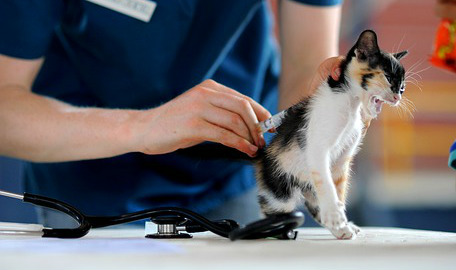Hi Victoria,
Thanks for your thoughtful inquiry.
I am not an immunologist, but I’ll do my best to answer your question. With any vaccine, there are a small number of animals that will not mount an adequate immune response – they will not make a protective level of antibodies against the pathogen (the virus or bacteria you are giving the vaccination for). This is thought to be due to a genetic or complicating disorder that interferes with the normal vaccine response. These animals are called vaccine “non-responders.” A titer test for cats measures the level of antibodies in the blood to the pathogen. If the level is below what is considered protective (there are different levels for different pathogens), it is possible the animal is a “non-responder.” It is also possible that the antibody numbers are inadequate because of the natural decline in antibodies that can occur with time. This is the reason we give “booster” vaccinations – it reminds the immune system to make more antibodies, and keeps the numbers above the protective level. I think it would be very difficult to determine which is the case in any given animal and it would need to be determined on a case-by-case basis, with consideration of age, vaccination history and other factors. Even with a titer in the protective range, there is no guarantee that the animal will not develop the clinical disease. Typically, I recommend doing titers annually for most pets if owners are interested in knowing this information. Titers are also often required for international travel (rabies specifically). I hope this gives you some insight – I suggest working with your vet to determine how to proceed with your own pets.
Best of luck,
Dr. Kim Hester
